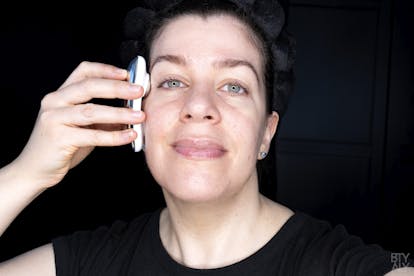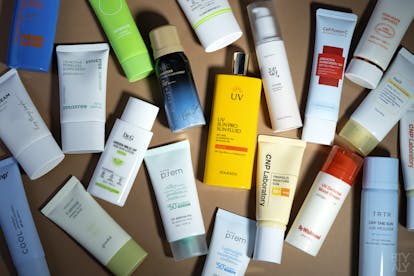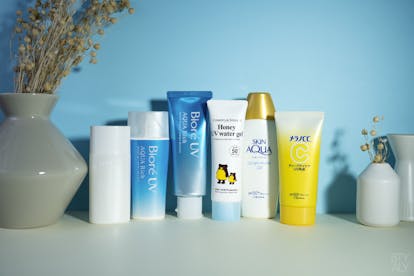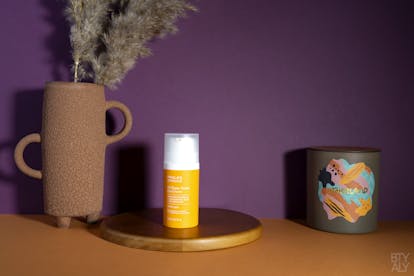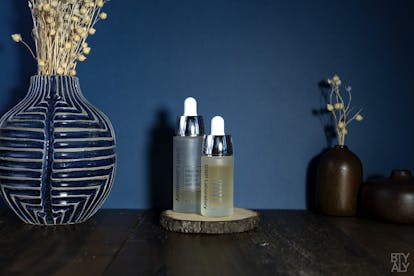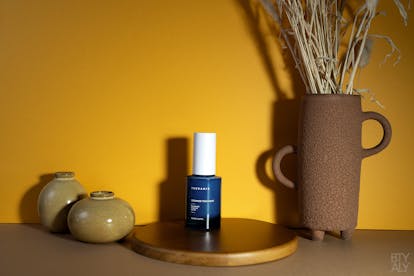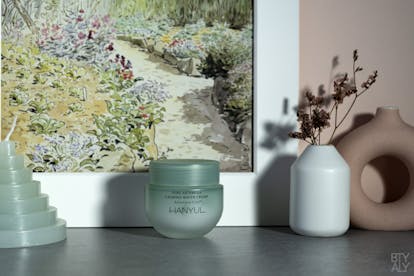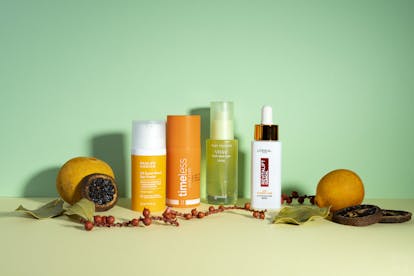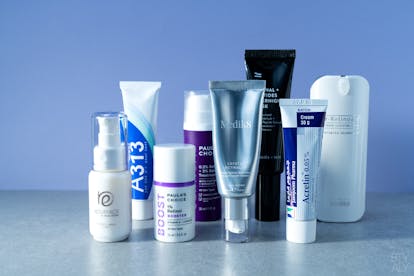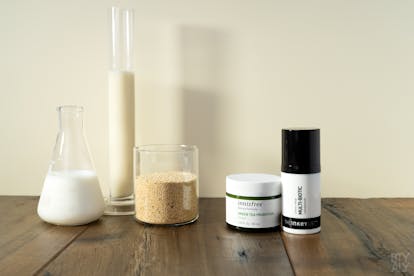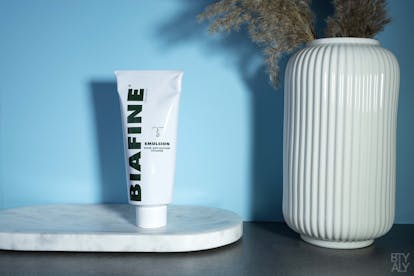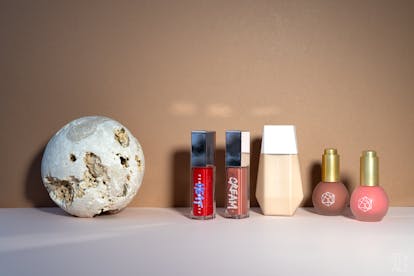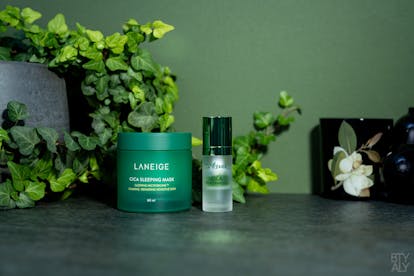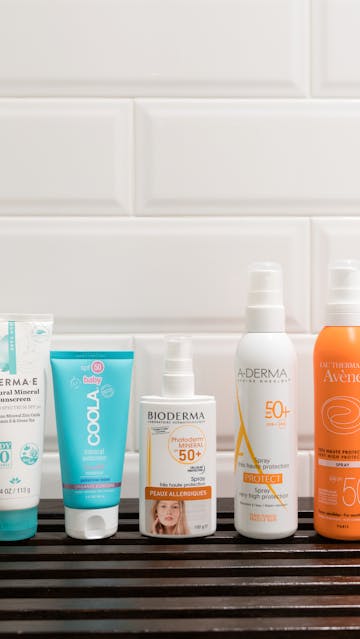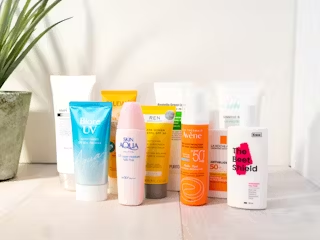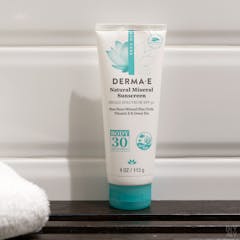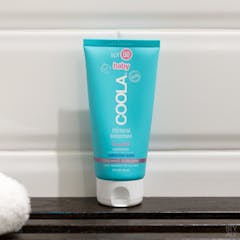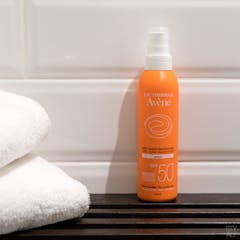At a glance
A buying guide on how to choose body sunscreens that provide maximum UV protection for the skin while being environment-friendly and an overview of those I tried.
As you probably know, I take sun protection very seriously. And when I go on vacation, I’m particularly careful when I choose my body sunscreens. I want them to provide effective UV protection but also to be environment-friendly.
I already talked about it in previous articles about sunscreens, I read labels very carefully before buying any sunscreen product because there are certain ingredients I want to avoid.
As some of you may know, certain UV filters can do a lot of damage to the environment, especially the already very fragile coral reefs* (*: see the edits below for a more nuanced position about that stance)
I don’t really have the option not to protect myself when I go into the sun because with my light skin, I burn super easily and also, well, the idea of skin cancer is definitely not a pleasant one!
I want to choose a product that is the least polluting possible, but which above all provides me with good sun protection.
And, if it’s not too much to ask, I also want a sunscreen which is nice to use!
Indeed, difficult to apply the right amount and to reapply often (because that’s what you have to do if you want proper protection) if the texture of the sunscreen you use is thick, sticky and super white.
So first, let’s have a look at the criteria that make a body sunscreen product reef and coral safe.
And I’ll also introduce you to the body sunscreens I tried when I went on vacation a few weeks ago.
EDIT/ IMPORTANT:
I wrote this article in 2018, and my position has evolved significantly in a few years. I’d like to share several pieces of scientific content that question the impact of sunscreens on marine life.
EDIT 2018:
I had to share this article and YouTube video from the great Australian blogger, Lab Muffin, who really puts things in perspective regarding the effects of sunscreens on coral:
– the article,
– the video.
EDIT 2019:
After I published this article, I was asked a lot on my social media which UV filters I personally avoid in my sunscreens, so I will answer here, but please, read my answer with a grain of salt because this list can change if I read new information and scientific studies on the topic.
So, personally, the UV filters I avoid in priority in my body sunscreen products at the moment are:
– nanos mineral filters: nano Zinc Oxide and nano Titanium Dioxide (knowing that there is also a doubt about the non-nano version of Zinc Oxide, so it gets very complicated…).
But also these chemical filters:
– Oxybenzone (not allowed in Hawaii),
– Octinoxate (not allowed in Hawaii),
– Enzacamene (or Parsol 5000), which is rarely used in current sunscreen formulas.*
But I’m not a scientist and a lot of studies still have to be done on more recent chemical UV filters, so it’s not easy to be 100% sure.
And also, it’s important to make the distinction between real info and marketing. A lot of brands use greenwashing at a marketing tool these days…
EDIT 2021:
I would like to share with you two other articles that show that this subject is definitely not written in stone, and that scientific discoveries are evolving on the subject:
An article published in 2019 by coral scientists on the The Conversation, who believe that there is currently not enough evidence to show that sunscreen products are harmful to corals.
And my post about Avène and the “octocrylene-gate”, which proves that communication on these subjects is not only complex, but also not always free of conflicts of interest…
*In short:
Personally, I find that it has become very complicated to keep track of things. When I posted this article in 2018, and the list of sun filters I was avoiding in 2019, I thought I was doing the right thing and wrote this post with the info I had at the time. But in 2021, I know that the sources I had at the time were perhaps not the most reliable, and I no longer avoid these sun filters in my sunscreens.
If you’re interested in the topic, I highly recommend the content of the the Australian blogger, Lab Muffin, who talks about all this regularly and who also updates her content according to the scientific info available.
How to choose an effective reef-safe sunscreen:
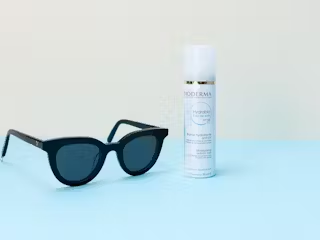 Skincare
Sun protection: Q&A and common myths
Even if sun protection is relevant all year long, I definitely feel this topic interests more people at the moment, with summer just around the corner…
Read more
Skincare
Sun protection: Q&A and common myths
Even if sun protection is relevant all year long, I definitely feel this topic interests more people at the moment, with summer just around the corner…
Read more
I already talked about it in my previous articles about sun protection, I prefer products with high SPF because I want the highest protection I can get. Usually, I never go below an SPF30. Most of the products I choose are SPF50, or better, SPF50+.
That’s it for the effectiveness. But when I want to choose an environment-friendly sunscreen, it gets more complicated!
Because you first need to learn which ingredients to avoid, starting with UV filters, which are the first ingredients suspected of polluting the environment and the marine ecosystems. And unfortunately, it’s not that simple because opinions differ quite a bit on which ones are harmful or not.
In general, if you want to be sure your using a reef-safe sunscreen, most websites specialized in the environment recommend organic sunscreen products based on non-nano mineral filters.
Note: in Europe, it’s mandatory for manufacturers to stipulate on the packaging if the UV filters used in the formula is nano. In other countries, you’ll have to ask to know.
But the issue with non-nano mineral filters-based sunscreens is that they are usually greasy, thick and look very white on the skin. If I use them on my face, I don’t mind that much (well, up to a certain point!) because I can always apply makeup on top. But for the body, it’s quite annoying.
First, these non-nano mineral filters sunscreens are so difficult to spread on your skin, especially if you apply the right amount. Because, like with your face, you need to use a lot of product if you want to be well protected! Nothing annoys me more than reading in product reviews for mineral filters sunscreens: “It’s a bit difficult to spread, but a little goes a long way.” Well, no it doesn’t! If you use less, you’re just not properly protected!
On myself, I apply the equivalent of 10 tablespoons on my whole body (I’m tall). It’s usually recommended to apply between 6 and 10 tablespoons depending on your size. Feel free to be generous in your application! And it’s also better to reapply often: as soon as you get out of the water and every two hours.
So you understand easily that, with these quantities, if your product is super thick and greasy, it can quickly become a nightmare!
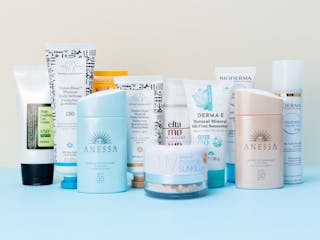 Skincare
Sunscreen guide 2018
I use sunscreens all year round because I care about my skin a lot (no big surprise so far!). As you can imagine, I’ve tried a lot of different ones and today, I’m finally going to introduce you to most of them!
Read more
Skincare
Sunscreen guide 2018
I use sunscreens all year round because I care about my skin a lot (no big surprise so far!). As you can imagine, I’ve tried a lot of different ones and today, I’m finally going to introduce you to most of them!
Read more
So I continued my research to see if I could still find sunscreen products that were easier to use during my holidays, but always keeping in mind that I wanted to avoid certain ingredients because they were too polluting for the marine ecosystems. But as you will quickly see, it’s very difficult to know which ones…
I first stumbled across a list provided by the Haereticus Environmental Labatory, which is the one that most American websites I consulted on the subject often refer to. On this website, they recommend avoiding mineral filters when they are nano-particles but also chemical filters like oxybenzone, octinoxate (these two have just been banned in Hawaii), enzacamene (or Parsol 5000) and octocrylene.
Then I found another one, even stricter, on the Coral Guardian website, which basically recommends avoiding almost all chemical filters as well as mineral filters when they are nano-particles.
I finally came accross another list from the French website passeportsanté.net, which was different again: some chemical filters were “allowed” but not others…
Needless to say: I was completely lost!
As a last resort, I also tried to contact certain French brands that use chemical filters in their products and yet still communicate on the fact that their products are reef-safe. Unfortunately, we’re in August, which means that there’s no one left in the office to answer my questions (if you’re French, you already know. For my non-French readers, August in France is a dead month, everything is closed, everyone is on holiday and even when you work, not much happens, c’est comme ça!)
I still found pages on L’Oréal (to which La Roche Posay belongs) and Pierre Fabre (= Avène, Aderma etc) websites which certify that the chemical filters they use in their sunscreens are reef safe. But it was impossible to find any official document or even a study that would list polluting chemical filters.
If you have any interesting leads, I’d be happy to add them to this article! Feel free to share them in the comments section. Thank you in advance!
When I did my shopping before going on holiday, I chose sunscreen products with non-nano mineral filters first and I also bought two sun sprays with chemical filters allegedly reef-safe.
So I went to Thailand with no less than 5 different body sunscreens to try!
100% mineral sunscreens:
The safest and “cleanest” sunscreen products for the environment but unfortunately not always the easiest to use…
:
∎ Texture:
a light, non-greasy cream.
∎ UV filters:
– Zinc Oxide(20%): UVA and UVB filters.
∎ Effects on the environment?
Low, it’s not a nano mineral filter.
∎ Ingredients list:
Zinc Oxide 20%, Purified Water, Coco-Caprylate (Coconut Derived), Dicaprylyl Carbonate, Lauryl Glucoside (Plant Derived), Polyglyceryl-2 Dipolyhydroxystearate, Glycerin (Vegetable Derived), Microcrystalline Cellulose (Plant Derived), Cellulose Gum (Plant Derived), Organic Camellia Sinensis (Green Tea) Leaf Extract*, Helianthus Annuus (Sunflower) Seed Oil, Panthenol (Provitamin B5), Sodium Ascorbyl Phosphate (Vitamin C), Tocopheryl Acetate (Vitamin E), Phytic Acid, Triethoxycaprylylsilane, Polyhydroxystearic Acid, Xanthan Gum, Benzyl Alcohol, Ethylhexylglycerin, Tocopherol.
∎ Silicone-free?
Yes.
∎ Alcohol-free?
Yes.
∎ Fragrance-free?
Yes.
∎ Anti-oxidants?
Yes: vitamin C, vitamin E, green tea.
∎ Other skincare ingredients in the formula:
Provitamin B5: repairing and soothing.
∎ White cast?
Yes, a slight one but it’s not a deal breaker.
∎ Is it greasy?
No.
∎ Is it easy to apply?
Yes.
∎ How does it look like after a few hours on the skin?
Sadly, exactly like the face version, it pills like crazy and it looks super patchy. It’s very difficult to reapply as the product cant’ stay on the skin…
∎ Would I repurchase?
No, it pills way too much! I feel like I’m no longer protected because the product comes off my skin and it looks quite patchy. Too bad, because the composition is pretty irreproachable…
:
∎ Texture:
an ultra rich and emollient cream, quite thick and almost pasty.
∎ UV filters:
– Zinc Oxide(4.3%): UVA and UVB filters.
– Titanium Dioxide (7.3%): UVA and UVB filters.
∎ Effects on the environment?
Low, they’re not nano mineral filters.
∎ Ingredients list:
Aloe Barbadensis Leaf (ORGANIC), Beeswax (ORGANIC), Bisabolol, Butyrospermum Parkii (ORGANIC Shea Butter), Carthamus Tinctrius (Safflower) Oleosomes, Cocos Nucifera (ORGANIC Coconut) Oil, Copernicia Cerifera (ORGANIC Carnuba) Wax, Jojoba Esters, Oryzanol, Persea Gratissima (ORGANIC Avocado) Oil, Prunus Armeniaca (ORGANIC Apricot) Kernel Oil, Sesamum Indicum (ORGANIC Sesame) Seed Oil, Silica, Theobroma Cacao (ORGANIC Cocoa) Seed Butter, Tocopherol, Water.
∎ Silicone-free?
Yes.
∎ Alcohol-free?
Yes.
∎ Fragrance-free?
Yes.
∎ Anti-oxidants?
Yes: vitamin E, cacao.
∎ Other skincare ingredients in the formula:
Yes: moisturizing aloe vera, nourishing shea butter, soothing bisabolol, nourishing coconut oil, jojoba oil, apricot kernel, avocado, sesame oils. There are a lot of beautiful natural ingredients in the formula!
∎ White cast?
Unfortunately yes, the texture is very thick and leaves white traces that transfer on everything you touch.
∎ Is it greasy?
Yes, it stays greasy, the product never really sets.
∎ Is it easy to apply?
It’s terrible! It’s a very thick paste that has to be warmed in your hands and massaged for a very long time on the skin (great when you’re on the beach and it’s hot. Not.). It doesn’t really absorb, it just sits on top of your skin.
∎ How does it look like after a few hours on the skin?
It stays greasy for hours and transfers everywhere.
∎ Would I repurchase?
No way! Despite its perfect composition, it’s not a practical product to use. Even on the face, it doesn’t work, it’s too greasy! In short, for me, it’s a fail (and it wasn’t cheap).
:
∎ Texture:
a fluid milky texture.
∎ UV filters:
– Zinc Oxide: UVA and UVB filters.
– Titanium Dioxide: UVA and UVB filters.
∎ Effects on the environment?
Low, they’re not nano mineral filters.
∎ Ingredients list:
decyl oleate, dicaprylyl carbonate, zinc oxide, caprylic/capric triglyceride, cocoglycerides, titanium dioxide, silica dimethyl silylate, polyhydroxystearic acid, tocopheryl acetate, hydrogenated palm glycerides citrate, stearic acid, alumina, tocopherol.
∎ Silicone-free?
Yes.
∎ Alcohol-free?
Yes.
∎ Fragrance-free?
Yes.
∎ Anti-oxidants?
Yes: vitamin E.
∎ Other skincare ingredients in the formula:
Non.
∎ White cast?
Yes, it leaves a white cast especially if you use the correct amount to be protected.
∎ Is it greasy?
Yes, it leaves a greasy film that takes a long time to dry.
∎ Is it easy to apply?
It’s quite easy to spread on the skin but you still have to massage it a bit.
∎ How does it look like after a few hours on the skin?
It remains quite visible and greasy long after applying it so reapplying it is not easy. After just one re-application, the white cast is quite intense (on my skin, it looks almost purple).
∎ Would I repurchase?
No, probably not. It’s probably the best of the 3 mineral filter-based sunscreens I tried but it’s still not ideal. It’s too greasy, too white and it’s difficult to reapply during the day, which is very annoying if you want to remain effectively protected.
100% chemical sunscreens:
As I said earlier, their safety on the marine ecosystems is claimed by the brands that distribute them but I couldn’t find “official” information allowing me to be 100% certain.
Note: if you live in North America, you will have trouble finding these products because the chemical filters they contain are not FDA approved. They’re available in Europe and the Middle-East however.
The following two products are from the same French cosmetics group (Pierre Fabre laboratories), so the formula is really close, as you’ll see:
:
∎ Texture:
A very fluid milk that absorbs very easily into the skin and sets in a few minutes. It feels super lightweight, you can barely feel it on the skin.
∎ UV filters:
– Tinosorb S: UVA and UVB filters.
– Tinosorb M: UVA and UVB filters.
– Avobenzone: UVA filter.
– Uvasorb HEB: UVA and UVB filters.
∎ Effects on the environment?
Avobenzone is among the filters to avoid according to some environmental protection associations. As always, if the subject is important to you, I invite you to do your own research.
∎ Ingredients list:
avene thermal spring water (avene aqua). c12-15 alkyl benzoate. dicaprylyl carbonate. methylene bis-benzotriazolyl tetramethylbutylphenol [nano]. water (aqua). glycerin. bis-ethylhexyloxyphenol methoxyphenyl triazine. diethylhexyl butamido triazone. diisopropyl adipate. butyl methoxydibenzoylmethane. cetearyl isononanoate. lauryl glucoside. polyglyceryl-2 dipolyhydroxystearate. decyl glucoside. benzoic acid. caprylic/capric triglyceride. caprylyl glycol. citric acid. disodium edta. fragrance (parfum). glyceryl behenate. glyceryl dibehenate. hydrogenated palm glycerides. hydrogenated palm kernel glycerides. polyacrylate-13. polyisobutene. polysorbate 20. propylene glycol. sorbitan isostearate. tocopherol. tocopheryl glucoside. tribehenin. xanthan gum.
∎ Silicone-free?
Yes.
∎ Alcohol-free?
Yes.
∎ Fragrance-free?
No.
∎ Anti-oxidants?
Yes: vitamin E.
∎ Other skincare ingredients in the formula:
Avène mineral water: soothing.
∎ White cast?
No.
∎ Is it greasy?
No, this product dries in a few minutes without leaving a greasy film.
∎ Is it easy to apply?
Yes, you just need to massage it a bit but it doesn’t take long to absorb.
∎ How does it look like after a few hours on the skin?
It’s almost invisible and dries after a few minutes. It can be reapplied without any issue, it layers quite well.
∎ Would I repurchase?
Probably. It’s practical, easy to apply and reapply and doesn’t leave the skin greasy and white. I just wish I could be sure that it’s non-polluting without having to rely solely on the brand’s claims, but at least it doesn’t contain the most polluting chemical filters (Oxybenzone, Octinoxate, Enzacamene and Octocrylene), so I guess that’s still something.
∎ Texture:
A very fluid milk that absorbs very easily into the skin and sets in a few minutes. It feels super lightweight, you can barely feel it on the skin.
∎ UV filters:
– Tinosorb S: UVA and UVB filters.
– Tinosorb M: UVA and UVB filters.
– Avobenzone: UVA filter.
– Uvasorb HEB: UVA and UVB filters.
∎ Effects on the environment?
Avobenzone is among the filters to avoid according to some environmental protection associations. As always, if the subject is important to you, I invite you to do your own research.
∎ Ingredients list:
water (aqua), c12-15 alkyl benzoate, dicaprylyl carbonate, methylene bis-benzotriazolyl tetramethylbutylphenol [nano], glycerin, bis-ethylhexyloxyphenol methoxyphenyl triazine, diethylhexyl butamido triazone, diisopropyl adipate, butyl methoxydibenzoylmethane, cetearyl isononanoate, lauryl glucoside, polyglyceryl-2 dipolyhydroxystearate, decyl glucoside, c10-18 triglycerides, tocopheryl acetate, avena sativa (oat) sprout oil, benzoic acid, caprylyl glycol, citric acid, disodium edta, fragrance (parfum), glyceryl behenate, glyceryl dibehenate, polyacrylate-13, polyisobutene, polysorbate 20, propylene glycol, sorbitan isostearate, tocopherol, tribehenin, xanthan gum.
∎ Silicone-free?
Yes.
∎ Alcohol-free?
Yes.
∎ Fragrance-free?
No.
∎ Anti-oxidants?
Yes: vitamin E.
∎ Other skincare ingredients in the formula:
Oat extract: soothing.
∎ White cast?
No.
∎ Is it greasy?
No, this product dries in a few minutes without leaving a greasy film.
∎ Is it easy to apply?
Yes, you just need to massage it a bit but it doesn’t take long to absorb.
∎ How does it look like after a few hours on the skin?
It’s almost invisible and dries after a few minutes. It can be reapplied without any issue, it layers quite well.
∎ Would I repurchase?
Probably. Like the Avène sunscreen, it’s practical, easy to apply and reapply and doesn’t leave the skin greasy and white. I just wish I could be sure that it’s non-polluting without having to rely solely on the brand’s claims, but at least it doesn’t contain the most polluting chemical filters (Oxybenzone, Octinoxate, Enzacamene, and Octocrylene), so I guess that’s still something.
In conclusion:
As you can see, it’s not easy to find a sunscreen that ticks all the boxes!
Now, without forgetting that the primary function of these products is to protect my skin against UV rays, for now, I find that Avène and Aderma products are my best options: their texture is pleasant to use, they feel very lightweight on the skin. They’re also almost invisible which allows me to reapply them regularly without any issue.
Everyone chooses their products according to their own conscience and convictions. There is a dilemma of choosing between a product with an irreproachable composition but very difficult to use and a product I’m a little less sure regarding its ingredients. However when I can use the later easily, often and with an adequate quantity to guarantee a good sun protection, it’s hard to avoid reaching out for them. I hope I’ll soon find the perfect product that is efficient and that all agree will do no harm to the oceans and coral reef.
In conclusion: wear sunscreen, people! 😉


